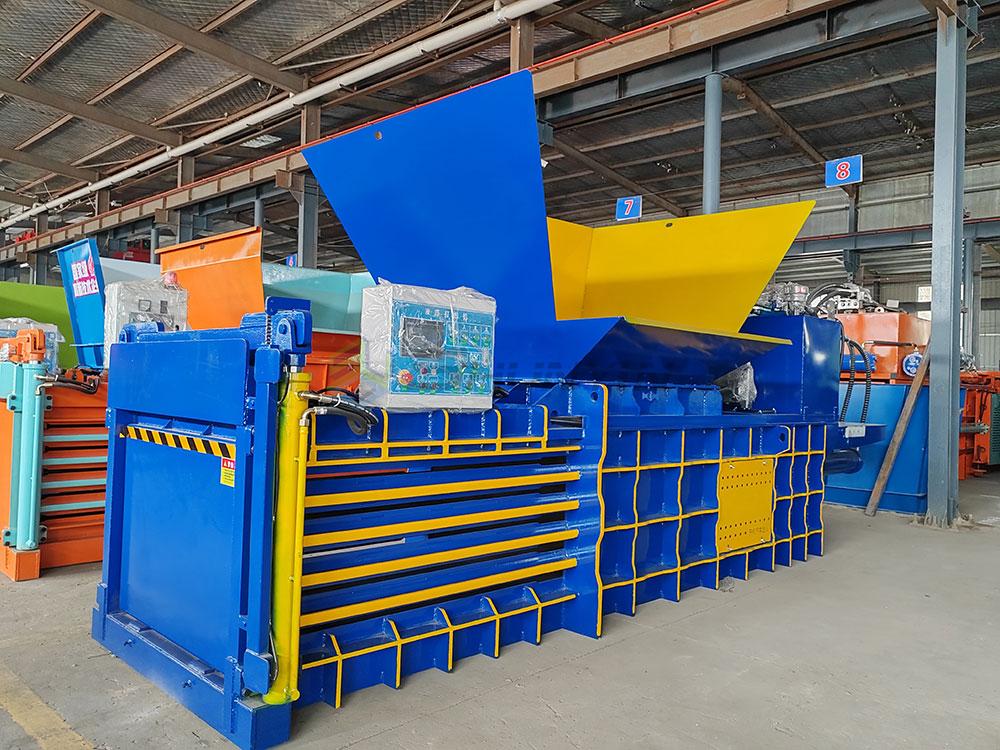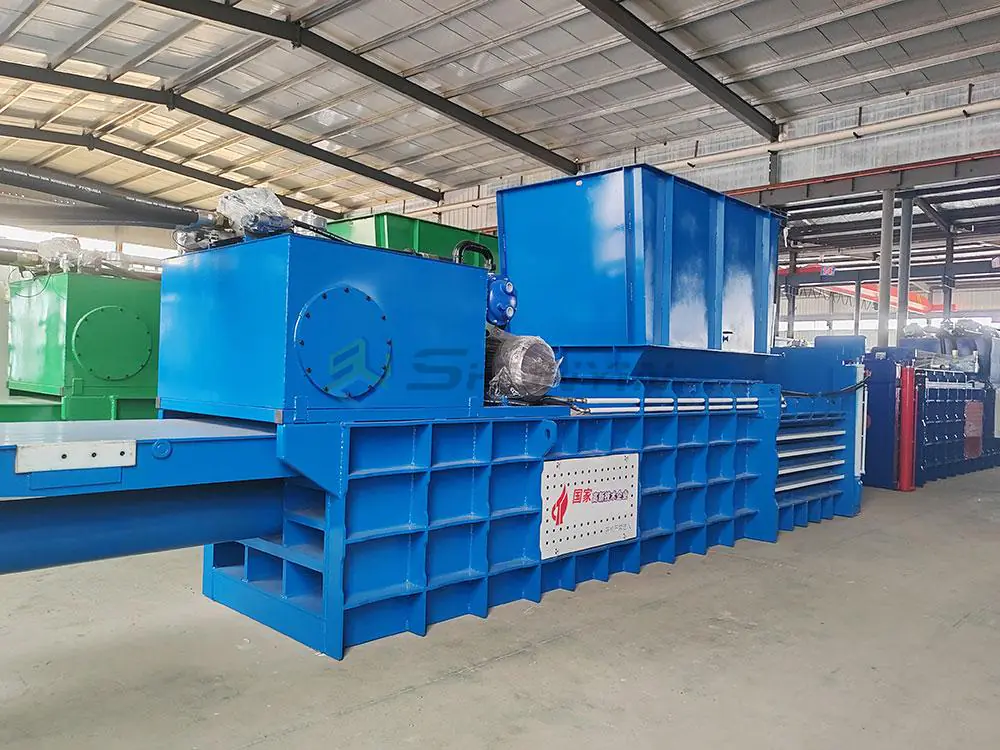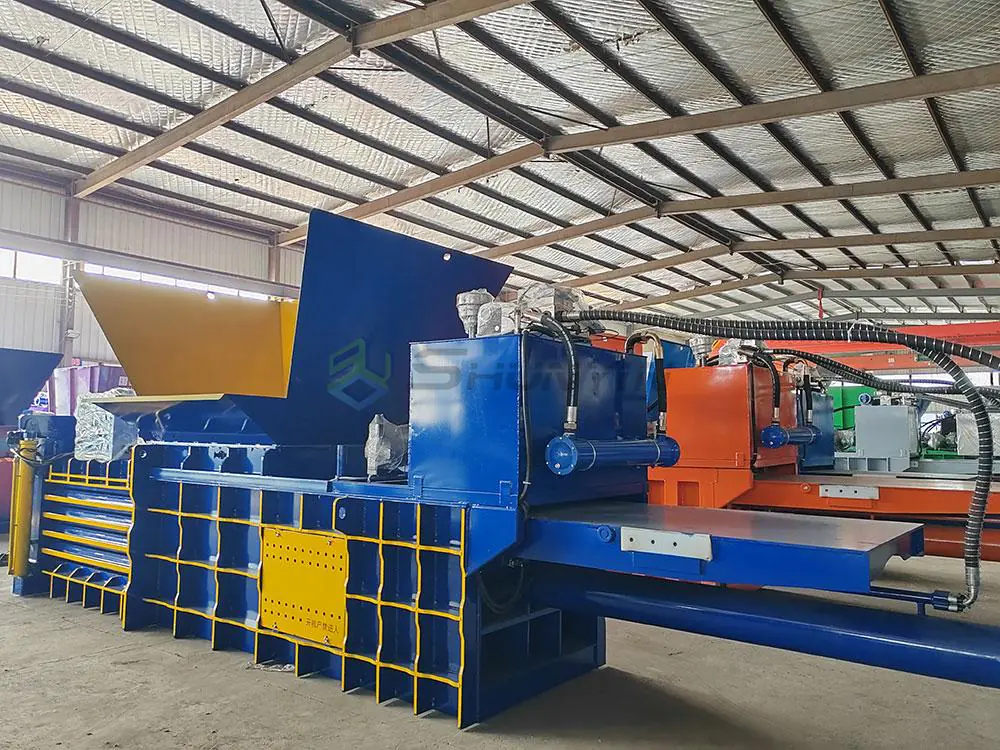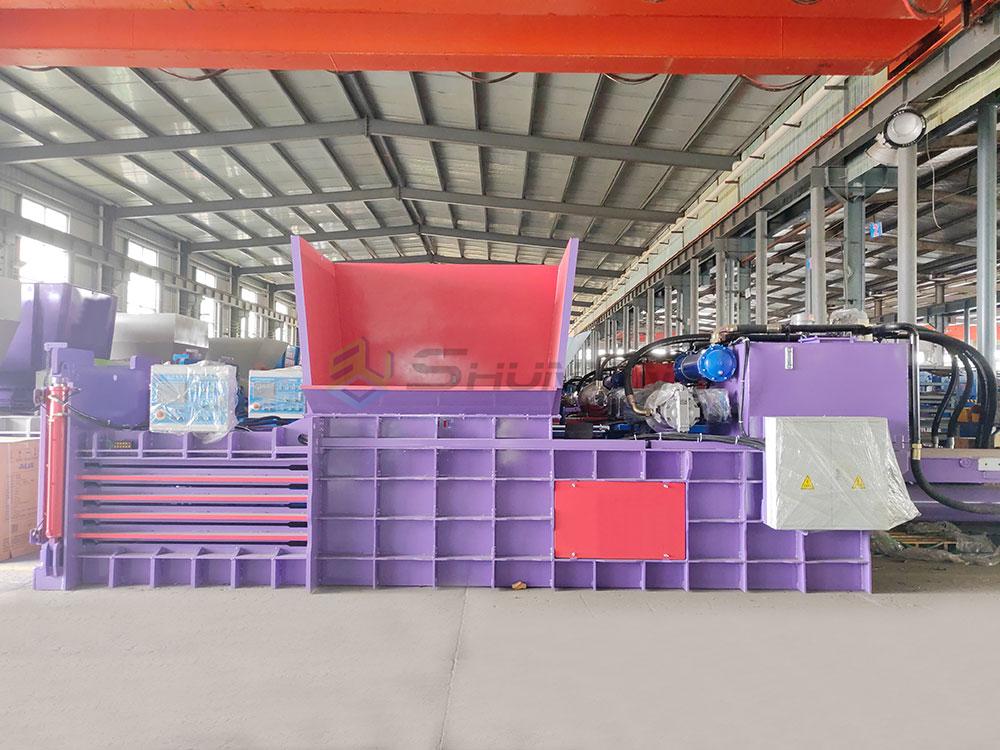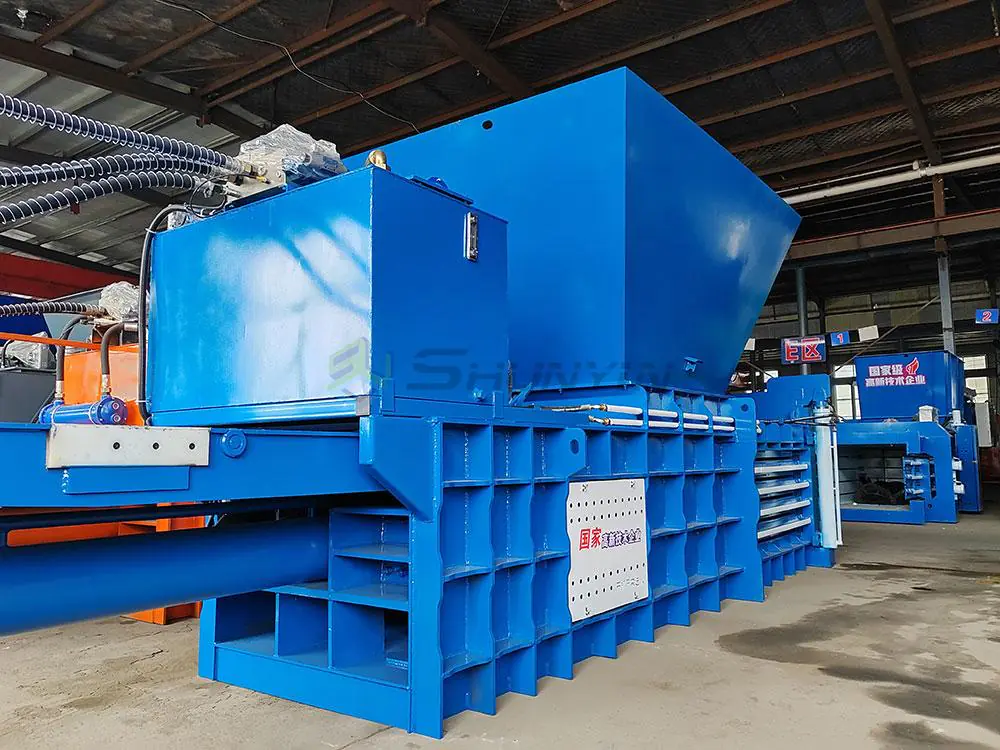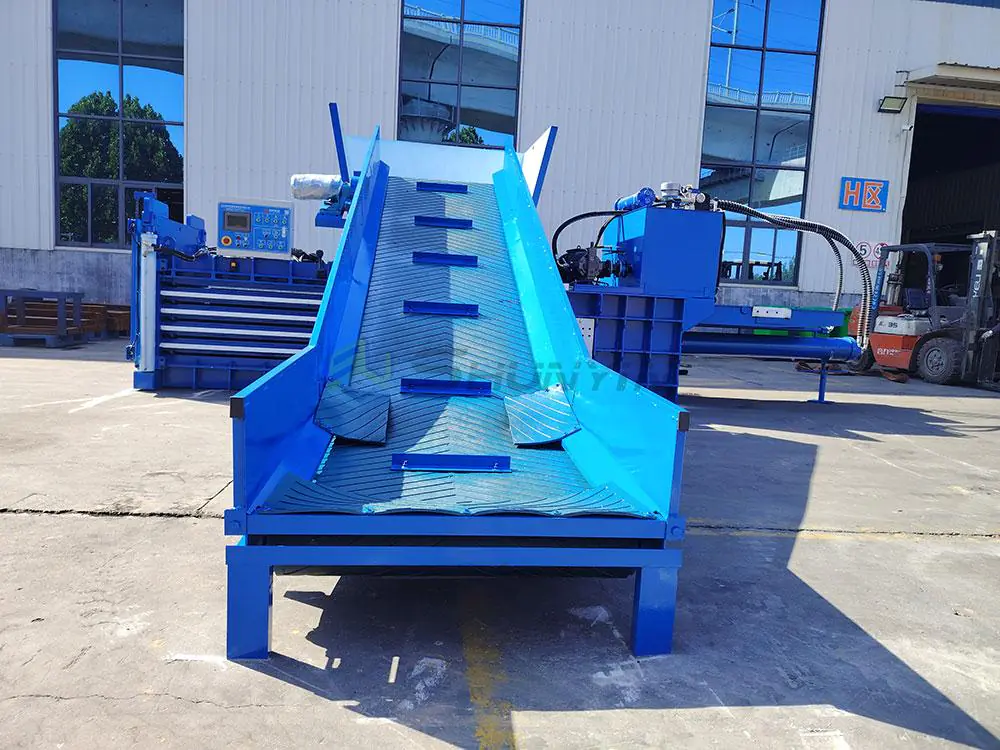
Managing plastic packaging waste efficiently can be a daunting task. High costs and operational inefficiencies often hinder effective recycling. Fortunately, affordable hydraulic balers from China offer a practical solution to streamline plastic packaging recycling.
A cheap hydraulic baler from China can be suitable for plastic packaging, but it’s important to consider:
- Compression Power: Make sure it has enough force to compact materials like PET and HDPE effectively.
- Material Compatibility: Ensure the baler can handle the type of plastic you need to process.
- Durability: Lower-cost balers may wear out faster, leading to higher maintenance costs.
- Automation: Budget models may lack advanced automation, requiring more labor to operate.
- After-Sales Support: Be mindful of limited support and spare parts availability.
To truly understand the value of these affordable hydraulic balers, let’s explore their functionality and benefits in plastic packaging recycling.
Can you put plastic in a cardboard baler?
Handling mixed materials like plastic and cardboard is a common challenge in recycling operations. Ensuring compatibility between different materials is essential for maintaining baler efficiency.
Yes, many cheap hydraulic balers from China are designed to handle both plastic and cardboard materials. These balers come with adjustable settings and robust mechanisms that accommodate different types of waste, ensuring effective compression and bale formation.

Integrating Plastic into Cardboard Baling
In my experience, integrating plastic into a cardboard baler requires careful calibration of the machine’s settings. Hydraulic balers from China often feature customizable compression pressures and bale sizes, which are crucial for effectively processing different materials.
Key Considerations
- Material Compatibility: Ensure the baler can handle the rigidity and density of both plastic and cardboard.
- Compression Settings: Adjusting the hydraulic pressure is necessary to achieve optimal bale density for each material type.
- Maintenance: Regular maintenance is vital to prevent wear and tear when processing mixed materials.
| Feature | Cardboard Handling | Plastic Handling |
|---|---|---|
| Compression Ratio | Moderate compression for flexible bales | Higher compression for rigid bales |
| Bale Size Options | Adjustable for various cardboard sizes | Customizable to accommodate plastic volumes |
| Durability | Designed for repeated cardboard use | Reinforced for tougher plastic materials |
By effectively managing both plastic and cardboard, recycling facilities can maximize efficiency and reduce operational costs. The ability to process multiple material types with a single machine simplifies workflows and enhances overall productivity.
What is a plastic baling machine?
Understanding the specific machinery used in plastic recycling is essential for selecting the right equipment. A plastic baling machine plays a crucial role in transforming waste into manageable forms.
A plastic baling machine is a device that compresses plastic waste into dense bales for easier handling, transportation, and recycling. These machines are designed to increase the efficiency of plastic waste management by reducing volume and streamlining the recycling process.

Features of a Plastic Baling Machine
In my operations, a plastic baling machine has significantly improved our recycling process by enhancing efficiency and consistency.
High Compression Efficiency
Plastic baling machines use hydraulic pressure to achieve high compression ratios, effectively reducing the volume of plastic waste. This makes storage and transportation more cost-effective.
Adjustable Bale Sizes
These machines allow for adjustable bale sizes, catering to different recycling requirements. Whether dealing with small or large volumes of plastic waste, the baler can be customized to meet specific needs.
| Feature | Description |
|---|---|
| Compression Ratio | High, significantly reducing waste volume |
| Bale Size Options | Adjustable to accommodate various recycling needs |
| Automation Level | Varies from semi-automatic to fully automatic |
| Durability | Built to withstand continuous operation |
Investing in a plastic baling machine has streamlined our recycling operations, allowing us to handle large volumes of plastic waste efficiently and consistently.
How does a plastic baler work?
Understanding the operational mechanics of a plastic baler is key to maximizing its benefits. A plastic baler efficiently compresses plastic waste into manageable bales through a series of well-coordinated processes.
A plastic baler operates by loading plastic waste into the baler chamber, where hydraulic pressure is applied to compress the material into a dense bale. The bale is then tied and ejected, ready for transportation or further recycling processes. This automation ensures consistent bale quality and efficient waste management.

The Plastic Baling Process
From my experience, the plastic baling process involves several critical steps that ensure efficiency and effectiveness.
Loading
Plastic waste is first sorted and cleaned to remove any contaminants. The clean plastic is then loaded into the baler chamber, preparing it for compression.
Compression
Hydraulic cylinders apply intense pressure to the plastic waste, compressing it into a dense, uniform bale. The compression ratio can be adjusted based on the type and volume of plastic being processed.
Tying and Ejection
Once the bale is formed, it is securely tied with wire or strapping to maintain its shape and density. The finished bale is then ejected from the baler, ready for transport to recycling facilities or storage.
| Step | Description |
|---|---|
| Loading | Insert sorted and clean plastic into the chamber |
| Compression | Apply hydraulic pressure to compress the plastic |
| Tying | Secure the bale with wire or strapping |
| Ejection | Eject the completed bale for transport |
Benefits of Using a Plastic Baler
Implementing a plastic baler has brought numerous benefits to our recycling operations, including:
- Space Savings: Reduces the volume of plastic waste, freeing up storage space.
- Cost Efficiency: Lowers transportation and handling costs by compacting waste.
- Consistent Bale Quality: Ensures uniform bales that are easy to manage and recycle.
- Environmental Impact: Enhances recycling rates and reduces landfill usage.
These advantages have made plastic baling an indispensable part of our waste management strategy, contributing to both operational efficiency and environmental sustainability.
What is a hydraulic baling machine?
Hydraulic baling machines are a fundamental component of modern recycling facilities. They offer advanced features that enhance the baling process, making waste management more efficient.
A hydraulic baling machine uses hydraulic pressure to compress waste materials into dense bales. This technology ensures consistent bale density and is capable of handling a variety of materials, including plastic packaging, making it a versatile and efficient option for recycling operations.

How Hydraulic Balers Enhance Recycling Operations
In my recycling facility, hydraulic balers have been instrumental in improving both efficiency and consistency in our waste management processes.
Consistent Compression
Hydraulic systems provide steady and controlled pressure, resulting in uniform bale density. This consistency is crucial for optimizing storage and transportation, as it ensures each bale occupies the intended space without excess gaps.
Versatility in Material Handling
Hydraulic balers are versatile and can handle a wide range of materials, including different types of plastics and packaging materials. This flexibility allows us to streamline our operations and manage diverse waste streams with a single machine.
| Feature | Benefit |
|---|---|
| Consistent Compression | Ensures uniform bale density for efficient storage |
| Material Versatility | Handles various types of recyclable materials |
| Durability | Built to withstand heavy-duty use in industrial settings |
Advantages of Hydraulic Balers
Hydraulic balers offer several advantages over other types of balers, making them a preferred choice for many recycling facilities.
- Efficiency: Faster compression cycles increase throughput, allowing for the handling of larger volumes of waste in less time.
- Durability: Constructed from high-quality materials, hydraulic balers are built to last, reducing the need for frequent repairs and replacements.
- Ease of Operation: Many hydraulic balers come with user-friendly interfaces and programmable settings, simplifying operation and reducing the learning curve for new operators.
- Low Maintenance: Designed for heavy-duty use, these machines require minimal maintenance, ensuring long-term reliability and performance.
Implementing a hydraulic baling machine has significantly improved our recycling operations by enhancing efficiency, reducing costs, and ensuring consistent bale quality.
Conclusion
Affordable hydraulic balers from China offer a cost-effective and efficient solution for managing plastic packaging waste. Their ability to handle multiple materials, consistent performance, and durable construction make them a valuable investment for recycling facilities aiming to optimize their operations and achieve sustainability goals.


